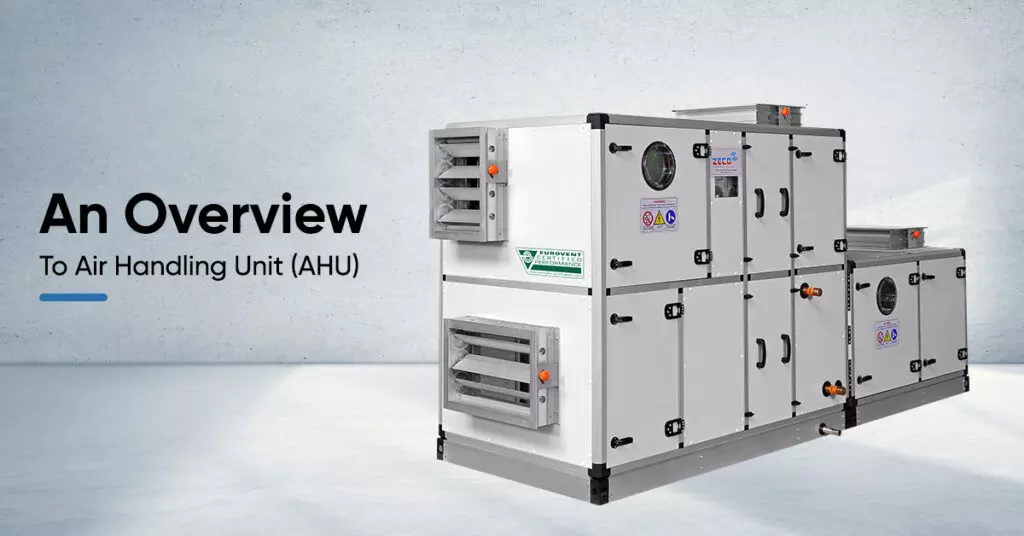Air Handling Unit (AHU) in Maintenance: A Detailed Overview
image for illustrative purpose

The crucial part of HVAC systems, an air handling unit (AHU) controls and distributes air throughout a structure. Large commercial buildings are where AHUs are most commonly found, although they can also be found in smaller establishments where climate control is crucial. Given their significance in regulating temperature and air quality, regular maintenance by https://www.socool.sg/aircon-thermistor-replacement/ is essential to guaranteeing their effectiveness, dependability, and longevity. The basic components of AHU maintenance, typical problems, and the advantages of routine maintenance are all covered in this article.
The Significance of AHU Maintenance:
Providing conditioned, clean air is the main function of an AHU. Inadequate maintenance can cause the system to become ineffective, which might result in:
• Greater Energy Consumption: An air conditioning unit that is operating with obstructed filters or broken components uses more energy to produce the intended air quality.
• Poor Air Quality: Pollutants can enter a building through dirty filters, coils, or dampers, which can have a negative impact on indoor air quality and pose health hazards.
• Reduced Equipment Lifespan: Ignoring maintenance can, like with any mechanical system, lead to early component wear and tear and subsequent need for frequent repairs or early replacement.
• Increased Downtime: System failures brought on by a faulty AHU might result in unscheduled downtime, which can be expensive, particularly in commercial settings.
Important AHU Upkeep Activities:
• Replacement of Filters:
To guarantee clean air distribution, filters in the AHU collect dust, pollen, and other airborne particles. Filters clog with time, decreasing system efficiency and airflow. Filter replacement or cleaning is one of the most basic yet important AHU maintenance activities. Depending on the environment and system usage, this should be done for the majority of systems every one to three months.
• Cleaning Coils:
The purpose of AHU coils is to heat or cool the air that flows through them. The coil surfaces may get accumulated with dust and debris over time, which will lessen the coils’ capacity to conduct heat. Maintaining effective heat exchange requires routine coil cleaning. Ignoring this can result in less effective heating and cooling, which will put more strain on the system and raise energy expenses.
• Fan and Motor Inspection:
The fan, which is an essential component of the AHU, moves air around the system. Motors can get broken or misaligned, and dirt can settle onto fan blades with time. Frequent inspection guarantees the fan runs smoothly and doesn’t put too much stress on the motor. The system’s lifespan can be increased by lubricating motor components and modifying fan belts, which can also stop wear and tear. https://www.socool.sg/ are the best when it comes to HVAC maintenance and servicing tasks.
• Inspection of Dampers and Ductwork:
The AHU’s ductwork is essential for distributing air throughout the structure. The effectiveness of the system may decrease as a result of ducts being dirty or leaking over time. Airflow regulation may also be impacted by jammed or misaligned damper systems. Maintaining ideal airflow and system performance involves making sure that dampers are positioned correctly and that ducts are clean.
• Cleaning of Drainage Systems:
A drainage system is built inside the AHU to collect the condensate generated during air cooling. Water overflow from a clogged drain pan or line can result in leaks, the growth of mold, and system damage. The drainage system can be kept clean and maintain system hygiene by routinely cleaning and inspecting it.
• Verification of Control Systems:
Automated control systems that manage temperature, humidity, and airflow are frequently found in modern AHUs. To make sure these systems are operating as intended, they should be tested and calibrated on a regular basis. Poor performance and inefficiency in the HVAC system as a whole might result from any hardware or software problems with the control systems.

